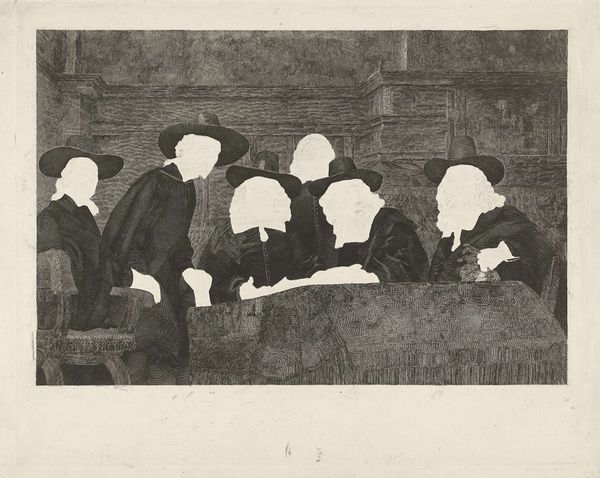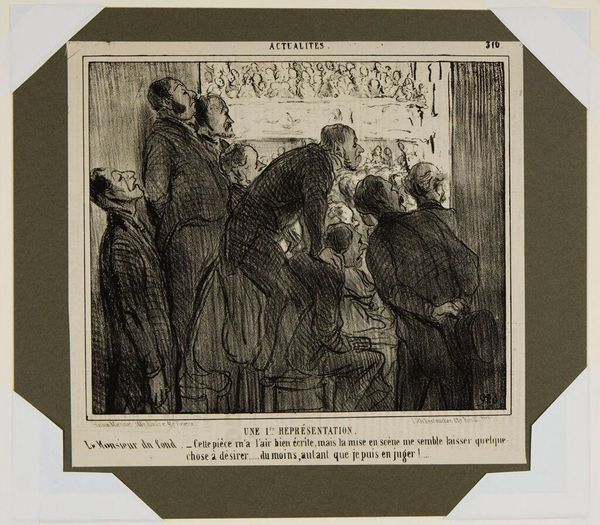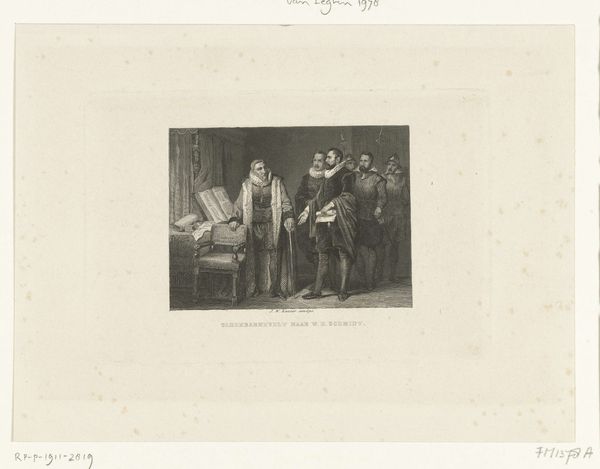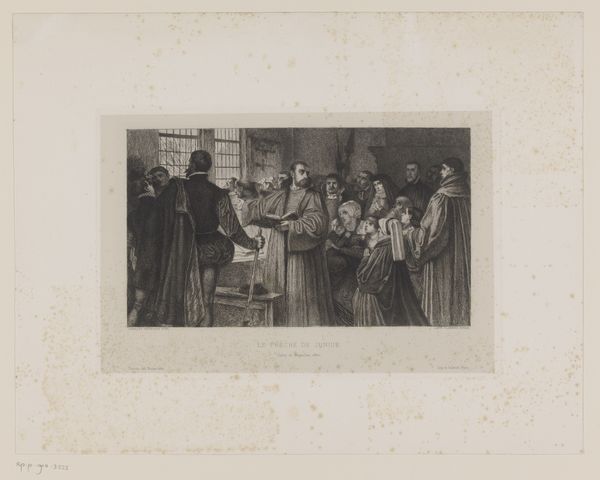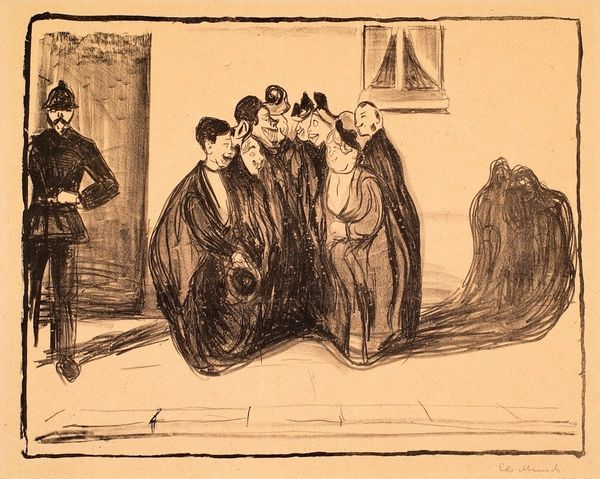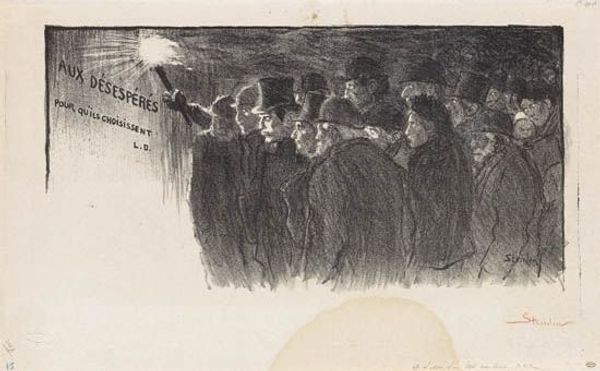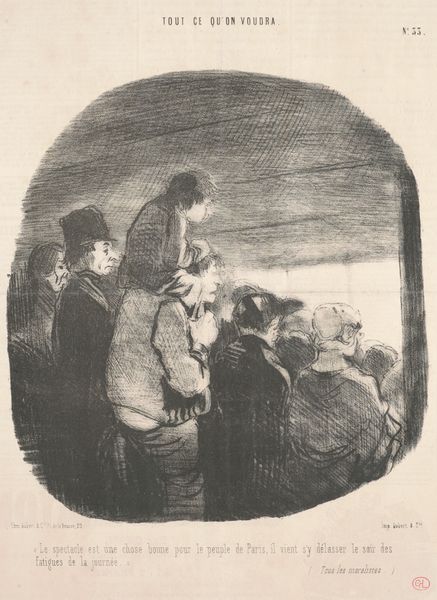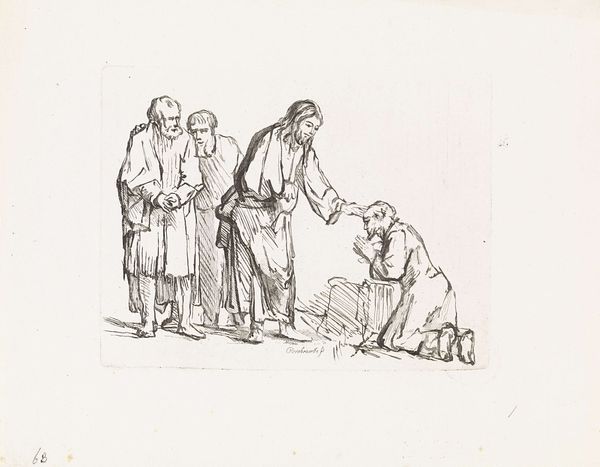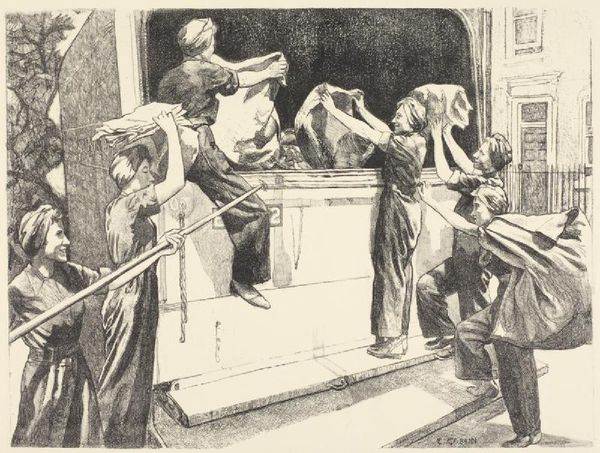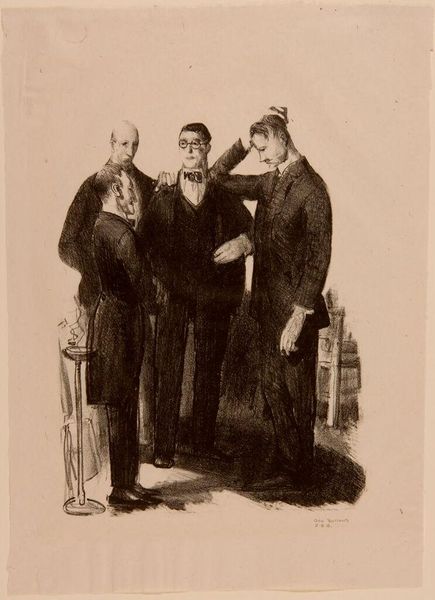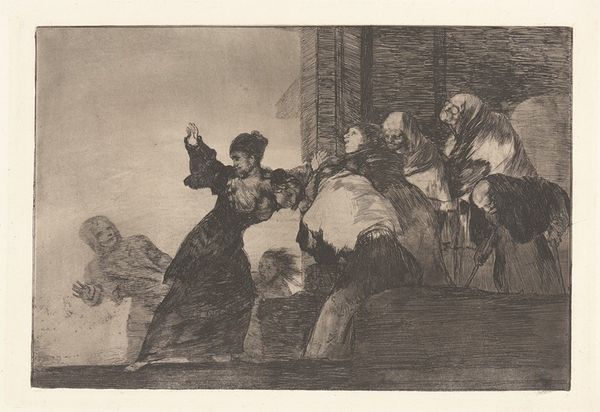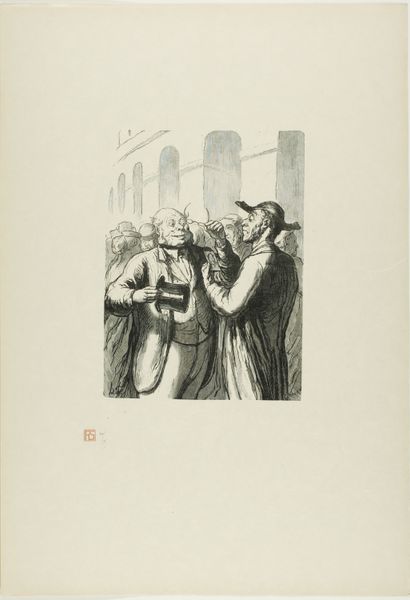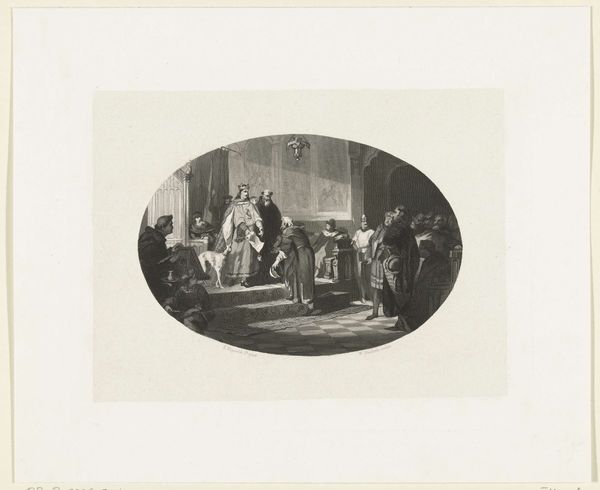
drawing, print, graphite, charcoal
#
portrait
#
pencil drawn
#
drawing
#
narrative-art
# print
#
pencil sketch
#
charcoal drawing
#
figuration
#
form
#
charcoal art
#
pencil drawing
#
line
#
graphite
#
charcoal
#
graphite
Dimensions: Image: 267 x 381 mm Sheet: 318 x 483 mm
Copyright: National Gallery of Art: CC0 1.0
Curator: Let's turn our attention to "Sweet Innocence," a 1936 print by Alfred Bendiner rendered in graphite and charcoal. Bendiner, often celebrated for his satirical eye, offers us a seemingly simple narrative. What strikes you immediately? Editor: The sheer weight of the shadows. It's not so sweet; the innocence seems to be on trial. All the looming figures feel... foreboding, almost accusatory, swallowing whatever naiveté might have been. What innocence? Curator: Indeed. Notice how Bendiner masterfully employs the stark contrast of light and shadow, creating a highly dramatic atmosphere. The figures are meticulously rendered with individual detail but become symbolic as they appear as agents of scrutiny. It begs the question of whose innocence is being considered. Editor: Right. It is an inquisition staged as art. That starkness…makes it timeless and haunting. It transcends one specific situation, resonating across various cultural interpretations. What do you think Alfred wanted the audience to walk away with here? Curator: Considering Bendiner's penchant for satire, perhaps a commentary on the inherent corruption of power, cloaked beneath the veneer of justice. He captures form beautifully, and even adds linear elements with those subtle lines adding dynamism and form to each figure, creating narrative art. What symbols do you think hold emotional weight? Editor: Symbolically? The height of the judgmental ones sitting down behind the ones pointing accusatory fingers feels powerful. You just know these pointing people are lower down in the food chain too, which makes it more upsetting somehow. And where do we sit? This isn't a safe space and we can get dragged in just looking at it. Curator: A provocative reading! The symbolic interplay between the foreground figures and those looming in the background effectively shifts the work into timeless allegory. What psychological chords do you think Bendiner aimed to strike? Editor: A reminder of vulnerability? How quickly one’s "innocence" can be defined by external forces. Maybe Bendiner captured that unsettling moment of realization that societal judgements are rarely fair or benevolent. More about pressure, maybe. Are there certain features you notice? Curator: Agreed. It invites self-reflection, making one examine their own roles within systems of judgement, implicit biases and societal expectations. A reflection, even, on the illusion of purity itself. Editor: The beauty is in its unease. Now, I need a bit of air, that print just gave me chills! Curator: Yes, it compels and disturbs – that is precisely the point.
Comments
No comments
Be the first to comment and join the conversation on the ultimate creative platform.
